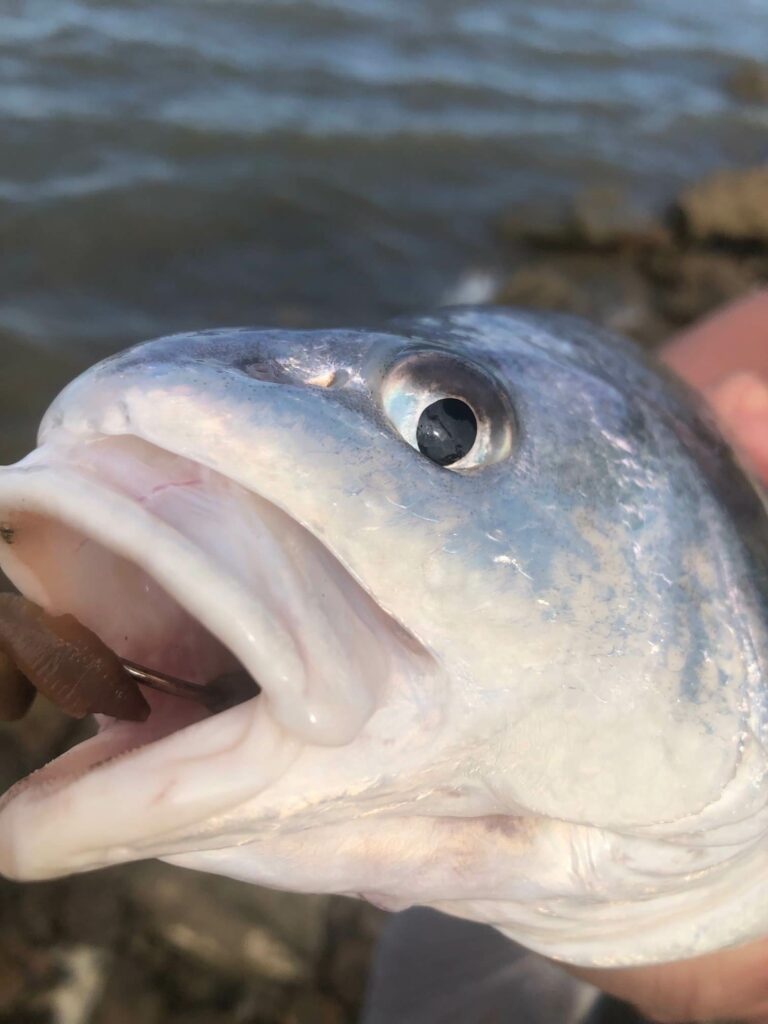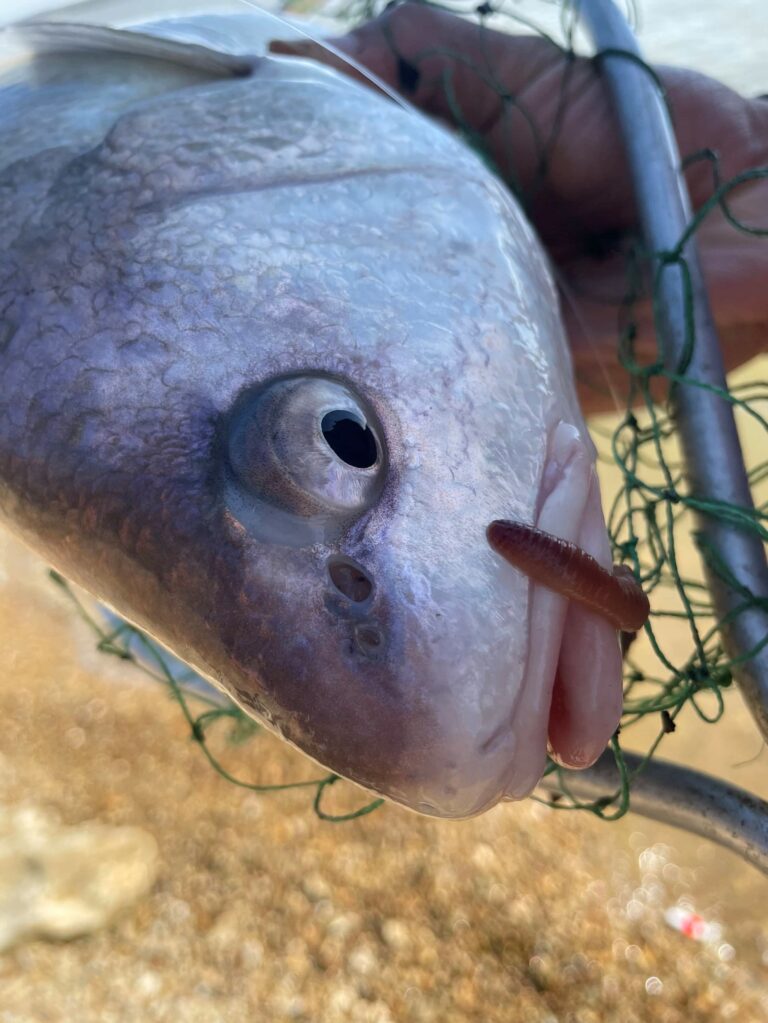Introduction
Each year people flock to various lakes, reservoirs, rivers and streams with the idea or notion that they are going to catch a catfish, walleye or whatever game species they have their heart set on. What anglers don’t normally consider when heading to the water is that they may catch a fish or two that really aren’t given too much attention or ideally apart of their plan. Many of these fish are often native non-game species that end up being thrown back, cut up for bait, or in the worst of cases, left on shore to die… I don’t personally understand the logic behind leaving fish to die on the bank, but it definatly is a sad sight to see. A lot of anglers don’t pay much attention to these ignorant acts, but I personally get a bit frustrated when people senselessly kill some of these older fish. I often assume that many of them are bycatch from people who bowfish who are trying to target carp.
One of the most common species I see dried on the banks and on the end of my line when I least expect it is the freshwater drum (Aplodinotus grunniens). This species goes by a variety of other common names such as, sheephead, and gasper goo/gaspergou to name a few. The fish are native to parts of North and Central America. They usually range in size from 10-14 inches in length and can potentially live up to 70+ years! The average life of this species in the wild typically ranges between 6-13 years of age. It is often hard for me to imagine the idea that one of the fish I caught could have been born when I was in high school or potentially be close the same age as me!
These fish have a unique appearance. The overall shape of the fish is almost humpbacked. There are relatively medium-large sized scales which reflect a grayish-purple color. The heads/faces of these fish are somewhat sloped as well. These fish also have a protractible mouth/jaw (to some extent) which aids in catching food/prey. The species is also noted for having a large caudal fin (tail fin).
There is often a lot of animosity associated with this species of fish. Many older fishermen will tell you that they don’t taste good or are too tough to eat. Often indicating that the fish is meant to be thrown back or used as bait for more sought after species such as catfish. Personally, most of the anti-drum rhetoric is often spread by people who have relatively little interaction with the fish outside of catching them on accident. I would argue that the majority of people have never tried to eat the fish based on previous assumptions or comments made by relatives or friends. During my time along the bank, I personally have accumulated a variety of interactions with the species and tend to look at the species in a better light than most.
This leads me to discuss the overall purpose of this article. The purpose of this article is to point out how freshwater drum are (one of) America’s most misunderstood fish. Some of the information commonly shared about this fish species on the water is outdated or just plain wrong. I plan to shed light on the natural history, ecological niche, why they are important, and my own personal relationship with the species. I hope to change your mind and perhaps shift a degree or so of the public’s opinion.
1. Natural History
As I mentioned in the introduction, freshwater drum are native to North and Central America. The United States Geological Survey website does a great job discussing the native range and the areas that he species has been recorded/observed when they write, “East of the Rocky Mountains in the St. Lawrence-Great Lakes, Hudson Bay, and Mississippi River basins from Quebec to northern Manitoba and southern Saskatchewan in Canada and south to the Gulf of Mexico. Present in the Rio Grande and other Texas rivers, and Gulf Coast drainages from Mobile Bay, Georgia and Alabama, through eastern Mexico to the Rio Usumacinta system in Guatemala (Barney 1926; Page and Burr 1991). This species is native and abundant in Lakes Michigan, Huron, Erie, and Ontario (Richardson 1831; Dekay 1855; Bean 1903; Forbes and Richardson 1908; Halkett 1913; Cudmore-Vokey and Crossman 2000; Roth et al. 2013)”. The species is the only member of its family in North America to be completely fresh water.
The fishes are known to be called drum or croaker because they can generate a drum/rubbing noise during spawning season so that males can attract females. The fish also have some serious molars/teeth inside their mouth/throat called pharyngeal teeth that they use for crunching hard shells. This makes the fish a prime candidate for aiding in the removal of the invasive zebra mussels.
Humans seem to have been utilizing the fish for some time as there is evidence that Native Americans were using the otoliths (calcium carbonate disks found in fish’s ears used for hearing, sensing vibrations, balance/coordination, and to estimate age) as pendants/charms for necklaces and bracelets

2. Ecological Niche
Within the fish’s native range freshwater drum are known to hang around slow-moderate moving water with sandy or muddy bottoms, though I have found them in areas with rocky/gravel bottoms. These fish seem to use the physiology of their face/head to move structure such as small rocks to find food such as aquatic insects, crawdads, snails, mussels, and small fish. Drums are bottom feeders and seem to appreciate worms hanging around the bottom of the water column whenever I use them to fish for channel catfish.
The fish rely on their lateral line (the visible line that runs along body) to detect prey in quick moving water and/or water with little visibility. The lateral line is a lateral line organ which helps the fish sense changes/vibrations in the water.
3. Importance of the Species
After learning a little bit about how the freshwater drum seems to interact within an ecosystem I think this is a good time to explain why you should care about this species. Originally I was planning on linking some interesting studies about the fish, but during my research discovered that there really isn’t a lot of research revolving around the relationships or life of this particular fish species. I understand that people don’t really care for this fish and the populations aren’t currently threatened, but we all know that every organism plays a role somewhere in an ecosystem.
It wasn’t until relatively recently (1990’s) that scientists observed that freshwater drum may be another useful species that could help control or reduce the population of invasive zebra mussels within various ecosystems. This is relatively big news as zebra mussels can cause issues with native mussel populations as well as wreak havoc on manmade infrastructure. I believe that since the species of fish is a “rough fish” and not a sought after game fish species research funding is lacking. This ends up leading to a lack of knowledge about the fish. I speculate that they play a bigger role in the ecosystem than currently known.
4. My Relationship with the Species

I personally think that a way to connect with the outdoors and the organisms around you is to interact with them and give their existence meaning or value even if it is only symbolic. In the case of the freshwater drum I have on occasion eaten a few, I even gave a head or two to a graduate teaching assistant who wanted to make a diagram or model with the teeth when I took ichthyology my senior year of college. I recall feeling awkward as I carried around a plastic bag containing the frozen head(s) in another smaller bag to class. This was not how I expected my first collegiate version of show and tell to unfold.
In regards to how the fish tasted though, often times many fishermen will tell you to stay far away from the fish in regards to consumption. I personally pay no mind to the warning as many anglers have never even attempted to cook the fish. Often I question the quality of others cooking and meat handling/processing, but am made certain that someone is not a strong chef when they make broad, generalized statements like this. I personally fillet the fish quickly (within 30-45 minutes) after the fish has been harvested, scaled, and rinsed with clean, cool water (to remove any scales/slime) then keep the fillets chilled on ice or in the fridge.
After I have the filets I only cook freshwater drum two ways, pan fried and deep fried. For the pan fried method I heat a skillet on medium heat and melt some butter in a pan. I then cut the filets into strips like chicken for fajitas. I season the fish with Cajon seasoning, salt and pepper. I then add the fish and let them get a little golden. Be careful not to overcook because the meat can get chewy. The meat is naturally a bit more firm than a fillet from a channel cat and has a mild taste to it.
When frying the fillets I usually prepare them in the same way that I prepare my catfish which I have already written about in my blog, “My Delicious and Easy Fried Catfish Recipe”. Personally when I fried the drum this way I couldn’t really distinguish any huge difference between the catfish I was eating and the drum. Take that for what it is worth. I have heard of people boiling pieces of drum to create a more chewy/firm shrimp-like texture to eat with marinara sauce like a shrimp cocktail or grilling/smoking the fish, though I haven’t tried either of these methods personally.
Lastly, I will note that I don’t generally eat freshwater drum unless it was a rough day of fishing or I was just extra hungry. For some reason I find the fish to be very beautiful and possessing lots of personality. I have a few pictures of the species that make me smile when I see them. The main logo for my website and YouTube right now is just a picture of a freshwater drum. Each picture reminds me of their beauty, hard fighting abilities in the water, and their soulful eyes. I often long to be out fishing when I see the pictures and can almost sense the warm breeze and smell of the water if I look at these pictures too long.
Conclusion
I could go on and on about fishing as most of you know. I can’t really describe the immense joy I get while being out on the bank fishing for anything that is willing to snack on the end of my line. Sure it can be a let down when the fish you reeled in isn’t the one you wanted, but it is still a fish nonetheless! If you are into fishing for catfish then I am sure that you have run into your fair share of freshwater drum. I encourage you to consider giving the fish a try if you have never eaten them before or consider taking a closer look at the fish as they are pretty in their own way.
I hope you learned something today about the species in regards to their natural history, ecology, importance, as well as what you can do with them if you find one on the end of your line this spring/summer.
Work Cited
“Freshwater Drum (Aplodinotus Grunniens) – Species Profile.” USGS Nonindigenous Aquatic Species Database, United States Geological Survey, nas.er.usgs.gov/queries/FactSheet.aspx?SpeciesID=946. Accessed 4 Feb. 2024.
